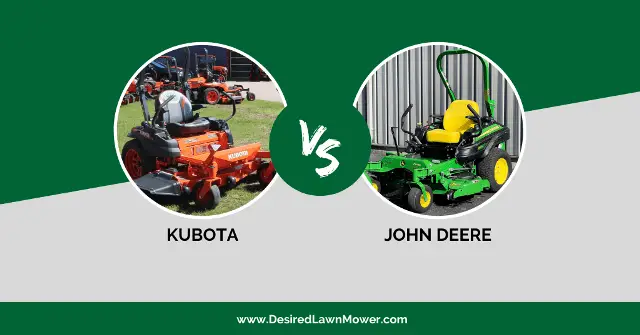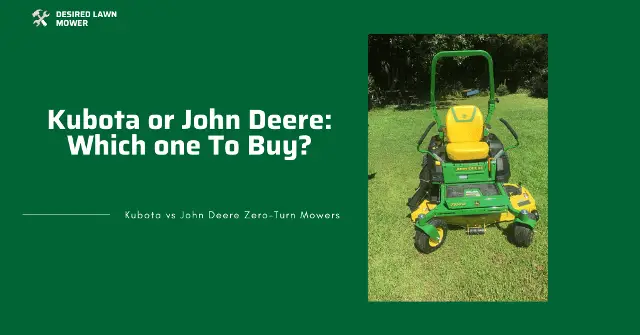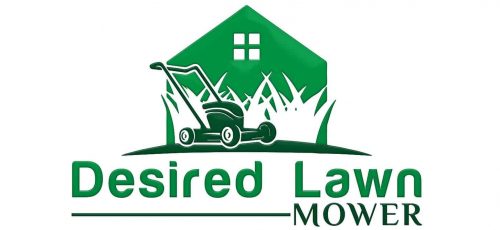Purchasing a zero-turn mower is no easy task. You have a plethora of options with each brand promising to be the best you’ve ever had far and beyond. I can’t say all of the zero-turns deliver exactly what they promise, unfortunately, which is probably why your range is the top two brands among many. It’s truly better to be safe than sorry.
However, since z-turn mowers are complicated to review, the need for an honest comparison breaks the surface. This is because your mowing experience is highly featured by you and your field’s requirements. So, the riding mower brand that might work for you, might be a disaster on wheels for your neighbor.
The Kubota zero-turn mowers are much more invested in great user experience and quality in comparison to the John Deere’s, which automatically places them above the JD in contrast or a test for the better brand.
In this article, I will be distinguishing the Kubota and John Deere zero-turn mowers, to help you recognize which brand will suit you best based on your mowing needs. Let’s get into it!

Comparing The Specs: Kubota Vs John Deere ZTR
The fastest way to select a zero-turn brand amongst two options is by highlighting each of their strengths and weaknesses and relating them to what you seek, which can be done by discussing the specifics of the machines. Here’s what I’ve gathered for you:
On Grounds Of Power
Power is a very crucial aspect of a zero-turn mower. For every function whether wild or mild, your mowing machine has to be properly equipped for the journey, especially if you intend to get as many years as possible out of your z-turn.
Starting with the Kubota, their zero-turns mowers are equipped with 19 – 36.5 horsepower depending on the engines and the models they are paired with. The engines are from the well-known Kawasaki, Briggs & Stratton, and Kohler brands respectively. For a better perspective, the residential models start from 19 – 25 horsepower that can mow anything from 1 – 5 acres of grass under tough or adequate conditions, while the commercial models go from 21.1 – 36.5 hp and can devour anything from above 5 acres efficiently.
You have to understand that although there is an assigned measure of yards that the engines should be able to tackle, other features like how bumpy, slippery, sloped, and how aggressive the turf is on your lawn determine the amount of horsepower you will need.
Moving onto the John Deere, the motors used are also of the same brands sponsoring the Kubota ZTRs, but exert exactly 20 – 35 horsepower in difference; the JD residential models go from 20 – 25 and 23 – 35 hp in the commercial series.
While there isn’t a great difference in horsepower between the two contending trademarks, the Kubota brand has more powerful commercial models, with the benefit of more engine variation by starting with a 19hp instead of a 20hp engine.
A Match For Speed And Maneuverability
For your zero-turn mower to be fully effective in all jurisdictions, the transmission has to be top-notch. A whacky transmission could reflect horrid velocity, the inability of the ZTR to tackle any terrain that does not resemble a flat plain and many other issues you couldn’t even have imagined.
Fortunately, the transmission system is one of the most articulated parts of Kubota zero-turn mowers. Instead of outsourcing, Kubota z-turns run on the in-house transmission system that was modified to fit like a glove.
Although the goal of this brand, just like the others, is to efficiently transfer power from the engine to the wheels of the machine, the method is significantly tailored to provide an easier, faster, and smoother process for you as you mow. Which, in comparison to other brands, is much much better. In a measure of speed, Kubota zero-turns range from 8 – 11.2 miles per hour depending on the model and fitted engine.
On the other hand, the John Deere ZTRs are equipped with the well-known hydrostatic EZT (Integrated Zero-turn Transaxle) transmission and would be valued depending on the models of the brand. Although they are not as reliable as the Kubota transmission, they fare excellently and deliver smooth steady rides through and through. In terms of speed, JD zero-turns can go from 7 to 12 miles per hour making them faster than the Kubota allowing you a better range of options, and more speed if you’re seeking a commercial ZTR.
I would advise you to choose the JD for the extra velocity because although the Kubota boasts of a highly dependable transmission, there isn’t that much of a great difference in performance between the two. I honestly prefer the JD, nonetheless, simply for the luxury of familiar transmission.
Comparing Cut Quality, Deck Types, & Functionality
The overall deck and its function are easily the major reason why the zero-turn mower is created and should be taken just as crucial because the peace of mind that comes with relying on your mower for a nice cut quality is compared to none.
Both companies make use of stamped, welded, or fabricated decks. However, the Kubota ZTRs come in sizes from 42 – 72 inches with a cutting height of 1.5 – 5 inches, in contrast to the John Deere with a variety of 42 – 60 inches and a cutting height of 1 – 5 inches depending on the model you decide to purchase.
You’ll find the quality of the decks for both brands good, but the Kubota zero-turns have a sturdier deck in comparison to the JD. The decks are much more reinforced and will tackle the impact of bumping into obstacles more satisfactorily. However, in terms of cut quality, the John Deere ZTRs will mow your turf much better than the Kubota graded by the quality of dispersal, the evenness of the cut, and the lack of stragglers left behind.
With this difference in view, if you would rather have a sturdier deck that can withstand the toughest labor you are seeking to put through, I would highly recommend the Kubota. If on the other hand, a neat cut with the option of a 1-inch cutting height is the bang for your buck, I strongly suggest the John Deere zero-turns– they own the cut-quality crown.
Rating The Level Of Comfort And Stability
Zero-turn mowers offered horrible rides until brands started modifying the seats to save our poor spines ever since it’s been a rather helpful competition of which z-turn is best for your back.
Kubota zero-turn mowers are heavily invested in providing you with the most comfortable ride you can get. The machines are equipped with suspension seats complete with armrests starting from the residential to the commercial models. To give you a perspective, most brands only install suspension seats on commercial-grade models to suit the workload and price range of the machines.
The seats are so highly sought after that they are manufactured, branded, and sold separately to be installed on riding mowers on request. It’s safe to say that in terms of comfort, Kubota ZTRs have thrown the standards off the chart!
For the John Deere zero-turns, the difference is quite great. The seating features starting from the entry-level to the mid-level residential models are quite the bummer; the seats have below-adequate suspension on them and are not nearly as well-padded as the Kubotas.
There’s every chance for you to feel the tiniest bump surf through your bones in the most aggravating manner. Honestly, JD could do better with their standards of comfort. You’d have it a lot better when you go up the series, maybe even excellent for the commercial-grade models if you’re easy to satisfy.
However, the Kubota z-turns definitely win this round with the best comfort you can get whilst mowing. If you insist on a John Deere ZTR, you will surely need a suspension seat to withstand the job.
A Test For Stability And Traction
If your yard has a lot of engaging features like slopes, ditches, and hills, you will need the best zero-turn mower to equal the challenge.
Kubota ZTRs fare a good deal on slopes and hills. The wide beefy threaded tires support the mower with enough traction and stamina to tackle such plains. This can also be attributed to the build of the machine, which provides the mower with a wider stance compared to the JD, thus allowing much better traction and weight distribution so that hills are easier to climb.
Although the John Deere zero-turns make good climbing companions, they are simply not as good at climbing as the Kubota ZTRs are. With slippery terrain, ditches, and mild slopes, the JD copes quite great, but when hills are brought into the game, the Kubota models are the overall most stabilized z-turn mower to purchase among the two.
Pricing
Kubota zero-turn mowers are quite pricey; they start at $5,500 for the entry-level models and way towards $24,000 where the commercial z-turns settle. On the other side, John Deere’s z-turns start at $4,000 and end at around $12,000. If we’re stating the obvious, the Kubota ZTRs are hugely more expensive in comparison to the JDs. What a gap!

Should I Get The Kubota Or The John Deere Zero-Turn?
Kubota ZTRs are a good brand of machines; they offer more power, reliable long-lasting transmission, superb comfort, and aggressive stamina, including a pocket-shriveling price in comparison to the John Deere, and would last you a lifetime of bliss getting your money’s worth. They are the best option for professional or commercial use as the machines are fully equipped to tackle difficult and laborious situations and would do so more effectively than the John Deere.
On the other hand, John Deere’s zero-turns are the resident’s best choice. They offer a premium quality cut, a faster approach to tasks, are efficiently powered, and come at an affordable price compared to the Kubota z-turns. If you are strictly a residential lawn tender that is satisfied with reasonable mowing performance for their money’s worth, the John Deere ZTRs are your best bet.
Which Kubota Zero-Turn Model Do I Recommend?
I strongly recommend the Z422 if you’re looking into the most favorable Kubota zero-turn model for any kind of mowing task, be it residential or side professional. They strut to the show with 24 horsepower with a ground speed of 10 miles per hour respectively. You’ll find that this model comes with a suspension seat so that your comfort is completely guaranteed and a ROP bar to further ensure your safety.
The Z422 model is paired with either 60, 54, or 48-inch decks allowing you to choose which size best suits your mowing requirements. The price for this model ranges from $9,000 – $9,500 depending on the deck size you choose. Although pricey, the great deal of quality work you’d be getting out of the machine is worth it.
Which John Deere Zero-Turn Model Is Best?
The John Deere ZTR model that easily strikes the best of both worlds is the Z735M. This model brings to the game a 25-horsepower engine and a ground speed of 9.5 miles per hour respectively. The seating quality is good, although not as excellent as the suspension seat on the Kubota, but good enough to safely take you through your task without damaging your waist.
Similarly, they can be paired with either 48, 54, or 60-inch decks allowing you the grace of customization. This mower is very much capable of handling professional and residential duties which places it in my most satisfactory position for the quality of usability. For the value in money, they start at $8,600 – $9,000 depending on the deck size you decide on.
Concluding The Discussion…
The Kubota zero-turn mowers are manufactured with such intricate modern technology that is reflected in the pricing of the machines. On the other hand, John Deere is easily the most reliable zero-turn brand because of the level of experience they have gathered over the years.
Whether you choose the JD or Kubota ZTR, you’d still be making a great choice! This comparison is to help you choose the best z-turn mower for you and your unique mowing needs so that you can make a good reap of jobs well done. I wish you all the best!
